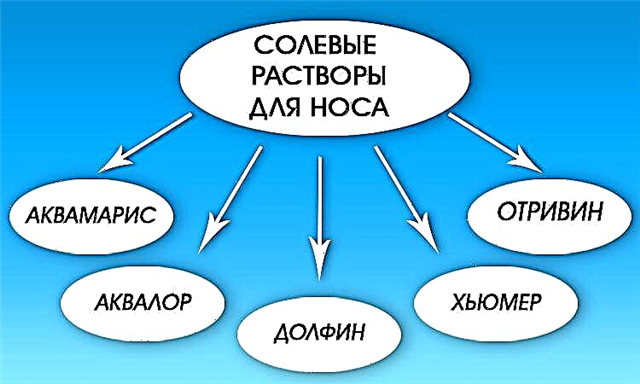Everyone is familiar with the situation when the nose bleeds, but very few people know what to do with bleeding. Medicine calls this process epistaxis and defines it as a phenomenon characterized by the draining of blood from the initial part of the respiratory tract due to a violation of the blood supply in the mucous membrane. Blood drips and streams down the larynx or flows directly from the outer openings of the nose. During bleeding, the patient is exhausted, hears a hum, feels dizzy. Intense recurrent nosebleeds are accompanied by a sharp decrease in blood pressure, rapid heartbeat, loss of strength and pose a danger to human life.
Epistaxis usually opens due to mechanical trauma, but sometimes this process is a symptom of inflammatory diseases of the nose. This phenomenon often occurs in a dream, it is typical for people of all ages. The number of patients with a similar pathology is up to 10% of those hospitalized in inpatient departments of otolaryngology.
Classification of bleeding
- According to the local manifestation of bleeding, there are:
 Anterior, when blood drains from the anterior nasal regions, (the so-called Little's zone, or Kisselbach's plexus). These bleeding accounts for the overwhelming majority of cases and stops easily.
Anterior, when blood drains from the anterior nasal regions, (the so-called Little's zone, or Kisselbach's plexus). These bleeding accounts for the overwhelming majority of cases and stops easily.- Posterior discharge occurs along the posterior wall of the nasal cavity. Patients with this type of bleeding often require medical attention.
- Unilateral bleeding occurs from one nostril.
- Bilateral is considered to be an outflow when blood oozes from both nostrils.
- According to the frequency of manifestation, single and repeated bleeding is distinguished.
- By the type of damaged vessels, bleeding is classified as arterial, venous or capillary.
The degree of blood loss:
- Insignificant - up to several milliliters.
- Light, in which the blood loss is not higher than 0.7 liters. The patient is in a semi-faint state, his pulse is fast.
- Medium (up to 1.5 liters of blood). The patient hears a hum in his ears, suffers from shortness of breath, thirst.
- Severe - the victim loses a fifth of the total blood volume, he has a fainting state.
Causes
- Local causes of nosebleeds:
- injury to the head, face, nose;
- nose surgery;
- inflammatory processes in the upper respiratory organs;
 allergies and pungent odors;
allergies and pungent odors;- benign and malignant neoplasms in the nose;
- dry air (especially in winter);
- drugs;
- stress and overwork;
- overheat.
- Common causes of nosebleeds:
- hypertensive crisis;
- blood clotting disorder;
- diseases of the cardiovascular system;
- infectious processes;
- very fast jump in atmospheric pressure;
- hormonal disbalance.
How to stop - first aid
Few know how to properly stop nosebleeds. Throwing your head back is strictly prohibited, since in this case blood flows from the nose into the larynx, it may enter the stomach, which will provoke vomiting. It is also contraindicated to take a horizontal position. When you're bleeding from  nose, stop drinking hot tonic drinks for a day. If the nose is bleeding, you should not take aspirin and other medications that interfere with the normal clotting process.
nose, stop drinking hot tonic drinks for a day. If the nose is bleeding, you should not take aspirin and other medications that interfere with the normal clotting process.
Many are afraid of blood and do not know what to do with nosebleeds. Remain calm under all circumstances. During periods of stress, the heart rate increases and the amount of blood lost increases. Open the window, free your throat and chest from clothes for full breathing. In a sitting position, lower your head, pressing your chin to your chest. It is recommended to take deep breaths through the nose and exhales through the mouth. This will help improve blood circulation.
Another effective method for quickly stopping bleeding is to apply a cold compress. They can be ice wrapped in a loose cloth or napkin. Vessels tend to constrict when cold, so this step will help reduce bleeding. A cold shower can also quickly stop bleeding. It is urgent to drip the nose with nasal drops of a vasoconstrictor action. If medication is not on hand, you can use a few drops of fresh lemon juice.
For light bleeding, pressing the wings of the nose with the fingers and breathing through the mouth will help. The blood will stop within 10 minutes. After the cessation of blood flow from the nose, it is not recommended to blow your nose for at least 12 hours.
What to do with nosebleeds outside? When your nose is bleeding and you are away from home, buy any chilled drink and apply it to the bleeding nostril.
If the blood does not stop, try South Korean Su-Jok Therapy: Tighten your thumb tightly with a rope or elastic band at the mid-nail level. This area is responsible for the area of the nose. According to traditional methods of treatment, pressing the point located between the nose and upper lip is effective. Hemorrhage will stop with simultaneous massage of the inner corners of the eyes.
 Conventional medicine can also tell you how to stop severe nosebleeds. The easiest way is to insert a tampon moistened with hydrogen peroxide, rosehip oil, sea buckthorn oil, or plain water into your nose. The tampon should be left in the nostril for half an hour. To prevent the turunda from drying to the nasal passages, regularly moisten it with water and remove it carefully. You can not tear off the dried tampon from the mucous membrane, this will provoke abundant blood flow.
Conventional medicine can also tell you how to stop severe nosebleeds. The easiest way is to insert a tampon moistened with hydrogen peroxide, rosehip oil, sea buckthorn oil, or plain water into your nose. The tampon should be left in the nostril for half an hour. To prevent the turunda from drying to the nasal passages, regularly moisten it with water and remove it carefully. You can not tear off the dried tampon from the mucous membrane, this will provoke abundant blood flow.
If the blood continues to flow, urgently call an ambulance and schedule a visit to the otolaryngologist. An experienced specialist will advise on how to stop nosebleeds and what to do if nosebleeds persist.
Hospital treatment
If blood comes from the anterior part of the nasal passage:
- do local anesthesia with lidocaine aerosol;
- moisten gauze or cotton wool with a solution of peroxide, thrombin, hemophobin;
- a tampon is inserted into the nose;
- bandage on the nose;
- leave turunda in the nose for up to 2 days (in case of a serious condition of the patient - up to a week), regularly moisturizing it;
- the tampon must be moistened immediately before removal.
 If there is blood in the back of the nose, the following procedures are performed in hospitals:
If there is blood in the back of the nose, the following procedures are performed in hospitals:
- sterile gauze swabs are tied with medical threads;
- the patient is given an anesthetic intramuscular injection;
- a rubber medical tube is inserted into the bleeding nasal passage and pulled into the throat, pulling it out through the mouth with forceps;
- at the end of the rubber tube, a gauze swab is fixed and pulled through to the internal nasal passages;
- the turunda is kept inside thanks to two threads coming out of the anterior nasal passages;
- another thread is brought out through the mouth and attached to the cheek with a medical plaster;
- additionally, tamponade of the anterior nasal passages is performed;
- turundas are not removed from 2 days to a week, depending on the intensity of bleeding;
- complex antibiotic treatment is carried out;
- remove tampons with medical sutures.
What to do if nosebleeds are oozing regularly? Perhaps this is due to the weakness of the blood vessels. With such a clinical picture, the doctor will advise moxibustion. This short-term procedure will not cause much discomfort. The most common are cauterization with silver, laser, and coagulation of the vessels in the nose.
Therapy for nosebleeds
You will find many recommendations on how to stop a nosebleed in an adult from Chinese healers who massage certain points on the body. In traditional medicine, there are also enough recipes for how to stop nosebleeds.
 It is important to remember that you first need to find out the cause of this symptom, so do not delay the visit to the clinic.
It is important to remember that you first need to find out the cause of this symptom, so do not delay the visit to the clinic.
Moderate and severe blood loss requires compulsory treatment. The first aid will be provided by the doctor of the emergency team. Next, the patient needs to go to the otolaryngologist, therapist and hematologist. The ENT will advise you to do a general, biochemical blood test and a coagulogram. The therapist will measure blood pressure, if necessary, write out a referral for an ECG, x-ray of the head, cervical spine, paranasal sinuses.

 Anterior, when blood drains from the anterior nasal regions, (the so-called Little's zone, or Kisselbach's plexus). These bleeding accounts for the overwhelming majority of cases and stops easily.
Anterior, when blood drains from the anterior nasal regions, (the so-called Little's zone, or Kisselbach's plexus). These bleeding accounts for the overwhelming majority of cases and stops easily. allergies and pungent odors;
allergies and pungent odors;

